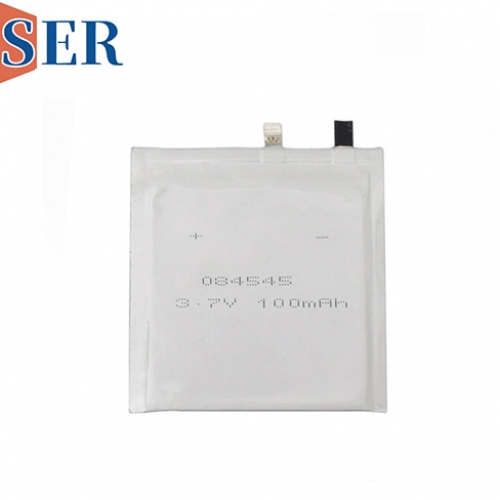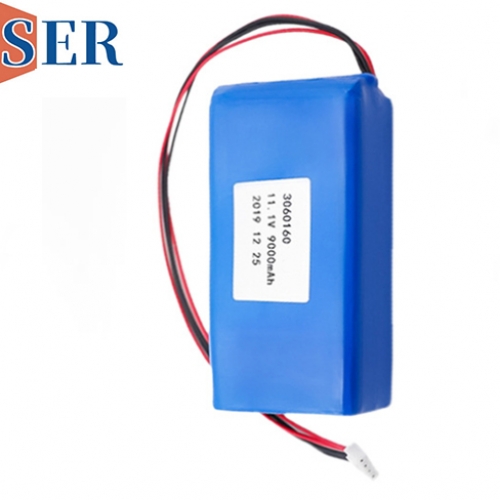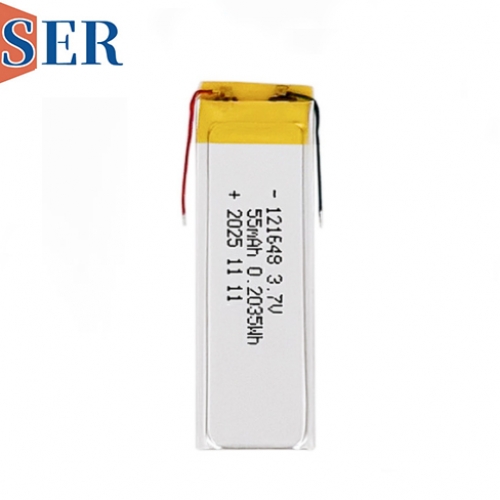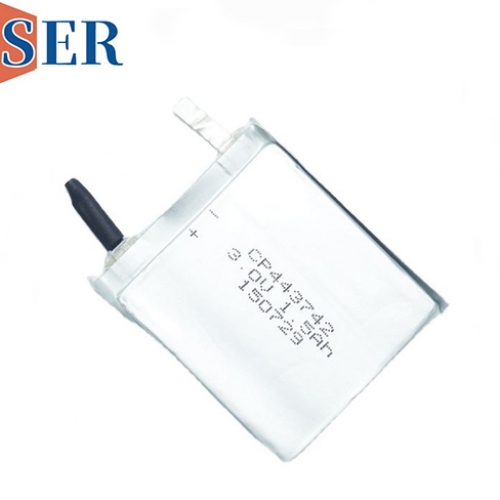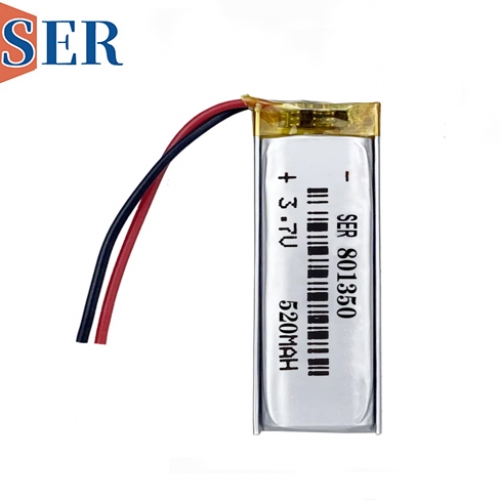Ultra-Thin Primary Non-Rechargeable Pouch Cell Batteries CP501932 CP452124 CP444844 CP251525 CP502025 3v 3.0v LiMnO2 Battery Cp502525
Ultra-Thin Primary Non-Rechargeable Pouch Cell Batteries CP501932 CP452124 CP444844 CP251525 CP502025 3v 3.0v LiMnO2 Battery Cp502525
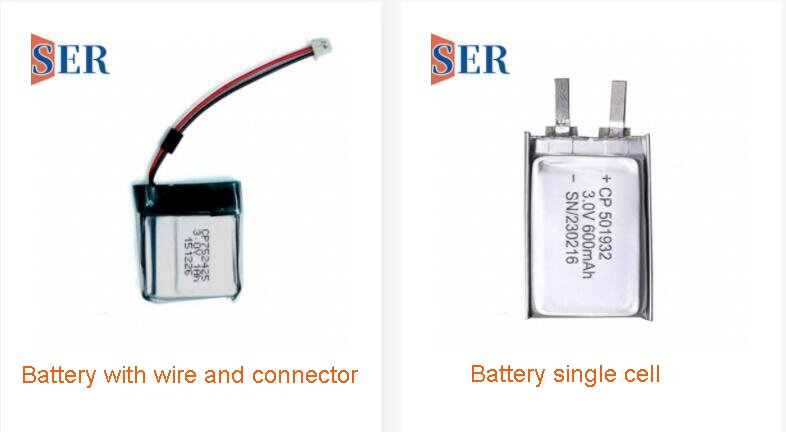
Abstract
In the ever-evolving landscape of battery technology, the demand for compact, efficient, and reliable power sources has surged across various industries. Ultra-thin primary non-rechargeable pouch cell batteries, such as the CP501932, CP452124, CP444844, CP251525, CP502025, and CP502525 3V/3.0V LiMnO2 batteries, have emerged as a game-changer, meeting the stringent requirements of modern electronic devices. SER GROUP, a leader in innovative design and engineering services, has positioned itself at the forefront of this revolution, offering fast and efficient solutions that cater to diverse industrial needs. This article explores the features, applications, and advantages of these ultra-thin batteries, while highlighting SER GROUP's pivotal role in driving innovation in the battery industry.
1. Introduction
The rapid advancement of technology has led to the miniaturization of electronic devices, creating a pressing need for power sources that are not only compact but also deliver high performance. Primary non-rechargeable pouch cell batteries have gained significant traction due to their thin profile, lightweight design, and ability to provide stable power output. Among these, LiMnO2-based ultra-thin batteries stand out for their exceptional energy density, long shelf life, and safety features. SER GROUP, with its expertise in design and engineering, has been instrumental in developing and optimizing these batteries for a wide range of applications, ensuring that industries can harness the full potential of this cutting-edge technology.
2. Overview of Ultra-Thin Primary Non-Rechargeable Pouch Cell Batteries
2.1 Chemical Composition and Working Principle
Ultra-thin primary non-rechargeable pouch cell batteries, particularly those based on LiMnO2 chemistry, operate on a simple yet efficient electrochemical principle. The anode is typically made of lithium, which is a highly reactive metal with a low atomic weight, allowing for a high energy-to-weight ratio. The cathode consists of manganese dioxide (MnO2), which undergoes a reduction reaction during discharge, accepting electrons from the anode. The electrolyte, usually a lithium salt dissolved in an organic solvent, facilitates the movement of lithium ions between the anode and cathode, generating an electric current.
2.2 Pouch Cell Design
The pouch cell design is a key feature that sets ultra-thin batteries apart from traditional cylindrical or prismatic cells. In a pouch cell, the electrodes and electrolyte are enclosed in a flexible, hermetically sealed pouch made of laminated aluminum foil. This design offers several advantages, including:
Thin Profile: The absence of a rigid casing allows for a much thinner battery, making it ideal for space-constrained applications.
Lightweight: The lightweight pouch material reduces the overall weight of the battery, which is crucial for portable devices.
Customizable Shapes: The flexible pouch can be easily shaped to fit the specific design requirements of the device, enabling greater design freedom for manufacturers.
High Energy Density: The compact design maximizes the use of available space, resulting in a higher energy density compared to other battery types.
2.3 Specific Models: CP501932, CP452124, CP444844, CP251525, CP502025, and CP502525
Each of these ultra-thin primary non-rechargeable pouch cell batteries has unique dimensions and specifications tailored to different applications:
CP501932: With its compact size, this battery is suitable for small electronic devices such as wearable fitness trackers, smart tags, and medical sensors.
CP452124: This model offers a balance between size and capacity, making it ideal for mid-sized devices like portable gaming consoles, electronic readers, and remote controls.
CP444844: The larger dimensions of this battery provide higher capacity, making it suitable for devices that require more power, such as digital cameras, handheld scanners, and portable navigation systems.
CP251525: This ultra-thin battery is designed for applications where space is extremely limited, such as in micro-electromechanical systems (MEMS) and implantable medical devices.
CP502025 and CP502525: These batteries offer a combination of thin profile and high capacity, making them versatile for a wide range of applications, including smartwatches, wireless earbuds, and IoT devices.
3. Advantages of Ultra-Thin Primary Non-Rechargeable Pouch Cell Batteries
3.1 High Energy Density
One of the most significant advantages of ultra-thin primary non-rechargeable pouch cell batteries is their high energy density. This means that they can store a large amount of energy in a relatively small and lightweight package, allowing devices to operate for extended periods without the need for frequent battery replacements. For example, a smartwatch powered by a CP502525 battery can last for several days on a single charge, depending on usage patterns.
3.2 Long Shelf Life
LiMnO2-based ultra-thin batteries have a long shelf life, typically ranging from 5 to 10 years, depending on storage conditions. This is due to the stable chemistry of the battery, which minimizes self-discharge and ensures that the battery retains its capacity over time. For industries that rely on long-term storage of batteries, such as in emergency backup systems or medical devices, this long shelf life is a crucial factor.
3.3 Stable Voltage Output
These batteries provide a stable voltage output throughout their discharge cycle, which is essential for the proper functioning of electronic devices. A stable voltage ensures that the device can operate consistently without experiencing fluctuations in performance, which could lead to errors or malfunctions. For example, in medical sensors, a stable voltage is critical for accurate data collection and transmission.
3.4 Safety and Reliability
Ultra-thin primary non-rechargeable pouch cell batteries are known for their safety and reliability. The pouch cell design, combined with the stable LiMnO2 chemistry, reduces the risk of leakage, thermal runaway, and other safety issues. Additionally, these batteries undergo rigorous testing and quality control measures to ensure that they meet industry standards and customer expectations. This reliability is particularly important in applications where battery failure could have serious consequences, such as in aerospace or automotive systems.
3.5 Environmental Friendliness
Compared to some other battery chemistries, LiMnO2-based ultra-thin batteries are more environmentally friendly. They do not contain toxic heavy metals such as cadmium or mercury, which can be harmful to the environment if not disposed of properly. Additionally, the pouch cell design reduces the amount of packaging material used, further minimizing the environmental impact.
4. Applications of Ultra-Thin Primary Non-Rechargeable Pouch Cell Batteries
4.1 Wearable Devices
The wearable technology market has exploded in recent years, with devices such as smartwatches, fitness trackers, and wireless earbuds becoming increasingly popular. Ultra-thin primary non-rechargeable pouch cell batteries are ideal for these devices due to their compact size, lightweight design, and long battery life. For example, a smartwatch powered by a CP502525 battery can provide several days of continuous use, making it convenient for users who do not want to worry about frequent charging.
4.2 Internet of Things (IoT) Devices
The IoT is transforming the way we interact with the world around us, connecting billions of devices and enabling seamless data exchange. Many IoT devices, such as smart sensors, smart tags, and home automation devices, require a reliable and long-lasting power source. Ultra-thin primary non-rechargeable pouch cell batteries are well-suited for these applications, as they can provide stable power for extended periods without the need for maintenance or replacement.
4.3 Medical Devices
In the medical field, ultra-thin primary non-rechargeable pouch cell batteries are used in a variety of devices, including implantable sensors, portable monitoring devices, and drug delivery systems. The long shelf life and stable voltage output of these batteries are crucial for ensuring the accurate and reliable operation of these devices, which can have a significant impact on patient care. Additionally, the compact size of these batteries allows for the development of smaller and more discreet medical devices, improving patient comfort and compliance.
4.4 Consumer Electronics
Consumer electronics such as digital cameras, portable gaming consoles, and electronic readers also benefit from the use of ultra-thin primary non-rechargeable pouch cell batteries. These devices require a power source that is both compact and capable of providing sufficient energy for extended use. The high energy density and long battery life of these batteries make them an ideal choice for consumers who want a reliable and hassle-free power solution.
5. SER GROUP's Role in Driving Innovation
5.1 Innovative Design and Engineering Services
SER GROUP is a leader in providing innovative design and engineering services for the battery industry. The company's team of experienced engineers and designers work closely with clients to develop customized battery solutions that meet their specific requirements. Whether it's optimizing the size and shape of a battery for a particular device or improving the performance and reliability of an existing design, SER GROUP has the expertise and resources to deliver fast and efficient solutions.
5.2 Advanced Manufacturing Capabilities
In addition to design and engineering services, SER GROUP also has advanced manufacturing capabilities that enable it to produce high-quality ultra-thin primary non-rechargeable pouch cell batteries at scale. The company's state-of-the-art manufacturing facilities are equipped with the latest technology and equipment, ensuring that each battery meets the highest standards of quality and performance. SER GROUP's commitment to continuous improvement and innovation in manufacturing processes also allows it to reduce costs and improve efficiency, providing clients with competitive pricing and fast turnaround times.
5.3 Collaboration with Industry Leaders
SER GROUP collaborates with industry leaders across various sectors, including electronics, automotive, aerospace, and medical devices, to develop cutting-edge battery solutions. By working closely with clients and understanding their unique challenges and requirements, SER GROUP is able to develop batteries that are tailored to specific applications, providing optimal performance and reliability. These collaborations also enable SER GROUP to stay at the forefront of technological advancements in the battery industry, ensuring that its clients have access to the latest and most innovative solutions.
6. Conclusion
Ultra-thin primary non-rechargeable pouch cell batteries, such as the CP501932, CP452124, CP444844, CP251525, CP502025, and CP502525 3V/3.0V LiMnO2 batteries, represent a significant advancement in battery technology. Their compact size, lightweight design, high energy density, long shelf life, and stable voltage output make them ideal for a wide range of applications, from wearable devices to medical sensors. SER GROUP, with its innovative design and engineering services, advanced manufacturing capabilities, and collaboration with industry leaders, has played a pivotal role in driving the development and adoption of these ultra-thin batteries. As the demand for compact and efficient power sources continues to grow, SER GROUP is well-positioned to lead the way in providing cutting-edge battery solutions that power the future of technology. By choosing SER GROUP's ultra-thin primary non-rechargeable pouch cell batteries, industries can ensure the reliability, performance, and longevity of their electronic devices, enabling them to stay ahead in a competitive market.

